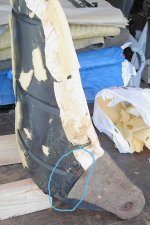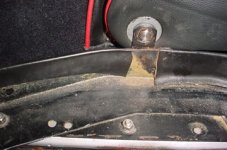ronzet
Jedi Knight
Offline
Healey Fans...
Speaking of Healey seats...
I just picked up my seatbacks from the upholsterer and am ready to drill the holes to mount the back to the seat frame...
The car is an early 100-6 BN4... The seat pan is a large bucket shape.
My query... Does anyone have a picture of how the seatback sits on the bucket frame at the back???
Thanks...
Speaking of Healey seats...
I just picked up my seatbacks from the upholsterer and am ready to drill the holes to mount the back to the seat frame...
The car is an early 100-6 BN4... The seat pan is a large bucket shape.
My query... Does anyone have a picture of how the seatback sits on the bucket frame at the back???
Thanks...

 Hi Guest!
Hi Guest!

 smilie in place of the real @
smilie in place of the real @
 Pretty Please - add it to our Events forum(s) and add to the calendar! >>
Pretty Please - add it to our Events forum(s) and add to the calendar! >> 


